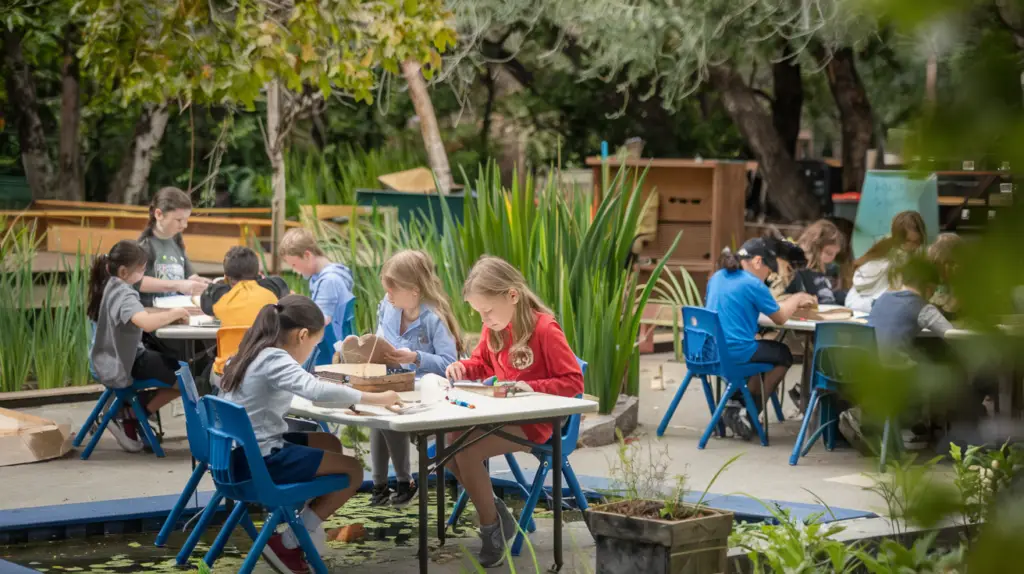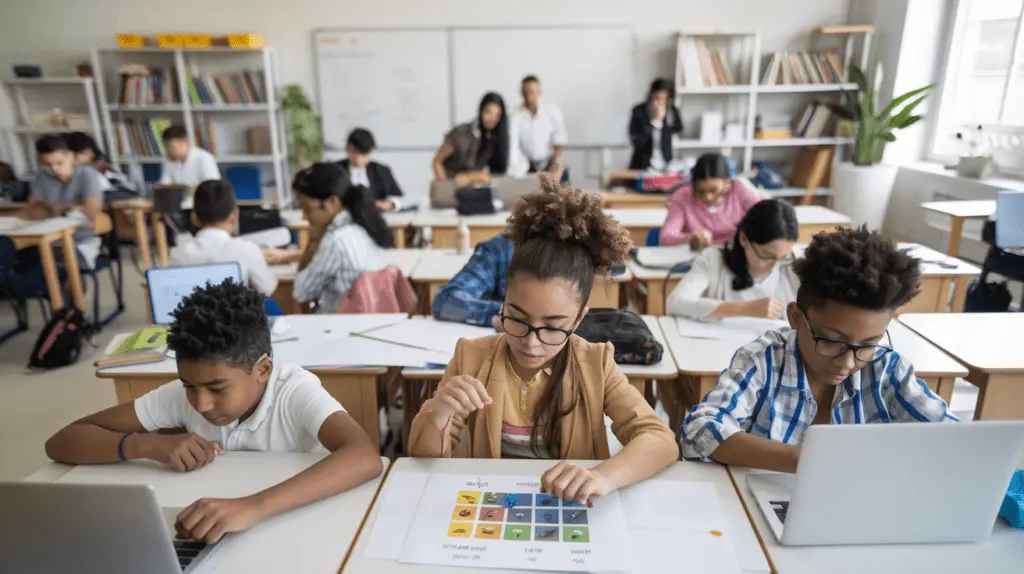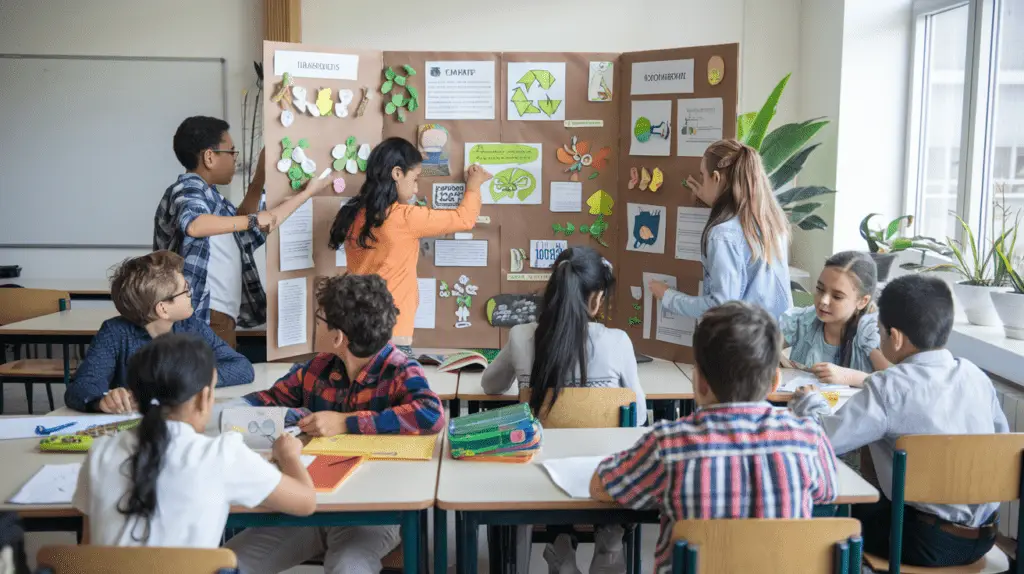As an educator in today’s rapidly changing world, you have the unique opportunity to shape the minds of future generations and equip them with the skills needed to create a more sustainable future. Education for Sustainable Development (ESD) is not just another educational trend; it’s a powerful approach that can revolutionize your teaching and empower your students to become global citizens ready to tackle the complex challenges of our time.
At Class2Class, we believe that ESD is the key to unlocking a brighter future for all. By integrating sustainability concepts into your curriculum, you’re not only imparting essential knowledge but also fostering critical thinking, problem-solving, and collaboration skills that will serve your students well beyond the classroom walls.
Let’s explore five innovative strategies to incorporate Education for Sustainable Development into your teaching practice and create a lasting impact on your students and the world.
1. Embrace Project-Based Learning with a Sustainability Focus
One of the most effective ways to bring Education for Sustainable Development to life in your classroom is through project-based learning. This approach allows students to dive deep into real-world sustainability issues, fostering engagement and creativity while developing crucial skills.
Consider challenging your students to design and implement a school-wide recycling program or create an urban garden that addresses food security in your local community. For example, in India, a group of students from a government school in Delhi implemented a rainwater harvesting system, not only learning about water conservation but also addressing a pressing local issue.
These hands-on projects not only teach students about environmental stewardship but also empower them to take action and see the tangible results of their efforts. By engaging in such projects, students develop a sense of ownership and responsibility towards sustainability issues, which is at the core of ESD.

2. Integrate the UN Sustainable Development Goals (SDGs) into Your Curriculum
The United Nations’ 17 Sustainable Development Goals provide an excellent framework for incorporating ESD into your teaching. These goals address global challenges such as poverty, inequality, climate change, and environmental degradation, offering a comprehensive lens through which to explore sustainability issues.
Try dedicating a unit or lesson to each SDG, encouraging students to research, discuss, and develop solutions for these pressing global issues. For instance, when studying SDG 6 (Clean Water and Sanitation), you could lead a class project on water conservation in your school or community, combining science, social studies, and civic engagement.
Class2Class offers specific learning activities for each of the 17 SDGs, complete with lesson plans and student worksheets. For example, our ‘End Poverty’ activity for SDG 1 guides students through understanding and addressing poverty issues on a global scale, allowing them to connect local actions with global impacts.
3. Foster Global Connections and Cultural Understanding
Education for Sustainable Development is inherently global in nature, making international collaboration an invaluable tool in your ESD toolkit. By connecting your classroom with others around the world, you can broaden your students’ perspectives and deepen their understanding of global sustainability challenges.
Class2Class offers a unique platform for fostering these global connections through our Collaborative Online International Learning (COIL) framework. This enables you to partner with classrooms worldwide, working together on sustainability projects and sharing diverse perspectives on global issues.
For instance, you could collaborate with a class in another country to compare local environmental challenges and brainstorm shared solutions. A teacher from Mumbai, India, recently partnered with a classroom in São Paulo, Brazil, to study urban air pollution and develop awareness campaigns in both cities. This not only enhances your students’ understanding of sustainability but also develops their intercultural communication skills and global awareness.
4. Encourage Systems Thinking and Interdisciplinary Approaches
Sustainability issues are complex and interconnected, requiring a holistic approach to problem-solving. By encouraging systems thinking and interdisciplinary learning, you can help your students develop a more comprehensive understanding of sustainability challenges and potential solutions.
Try organizing a sustainability fair where students from different subject areas come together to tackle a common issue. For example, science students could analyze the environmental impact of plastic pollution, while economics students explore the financial implications of sustainable alternatives, and art students create awareness campaigns. This interdisciplinary approach mirrors real-world problem-solving and helps students see the bigger picture of sustainability.
5. Empower Student Voice and Action
Perhaps the most powerful aspect of Education for Sustainable Development is its ability to inspire and empower students to take action. Encourage your students to identify sustainability issues they’re passionate about and support them in developing action plans to address these challenges.
This could involve starting an environmental club, organizing a community clean-up event, or launching a social media campaign to raise awareness about a specific sustainability issue. For example, a group of students in Kerala, India, initiated a successful campaign to reduce plastic waste in their coastal community, combining environmental education with practical action.
By giving students agency and supporting their initiatives, you’re not only teaching them about sustainability but also nurturing their leadership skills and sense of civic responsibility. This empowerment is crucial in creating the next generation of sustainability leaders and global citizens.

Embrace the Future with Education for Sustainable Development
Incorporating ESD into your teaching practice is not just about educating students on environmental issues; it’s about preparing them to be informed, engaged, and proactive citizens of a rapidly changing world. By embracing Education for Sustainable Development, you’re equipping your students with the knowledge, skills, and motivation to create positive change and build a more sustainable future for all.
At Class2Class, we’re committed to supporting educators like you in this important mission. Our platform offers a wealth of resources, collaborative opportunities, and professional development tools to help you integrate ESD into your curriculum effectively. By participating in Class2Class’s global collaborations, you’ll not only enrich your students’ learning experience but also enhance your own professional development. Our platform offers opportunities for international teacher exchanges, collaborative lesson planning, and certificates recognizing your participation in global education initiatives.
Ready to transform your classroom and empower your students to become sustainability champions? Join the Class2Class community today and unlock the full potential of Education for Sustainable Development in your teaching practice.
Don’t miss out on this opportunity to revolutionize your teaching and make a lasting impact on your students and the world. Join thousands of educators worldwide who are already using Class2Class to bring Education for Sustainable Development to life in their classrooms.
For more information on the importance of Education for Sustainable Development, visit the UNESCO ESD page.


